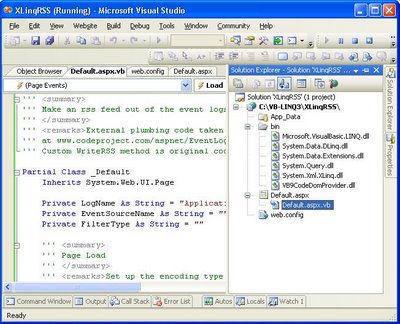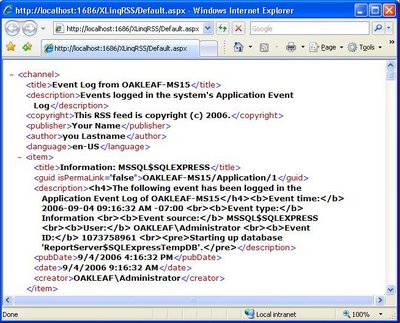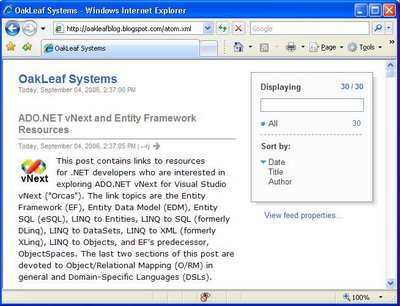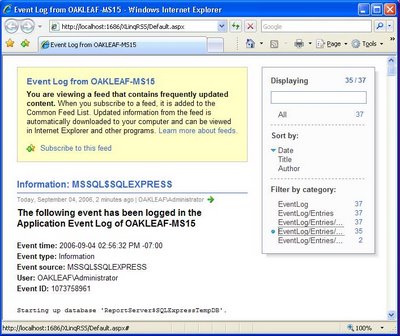Michael Arrington Badmouths Squidoo (Again)
 Michael Arrington delivered a presentation to The Future of Web Apps conference held in San Francisco on September 13-14, 2006. According to Dan Farber, who covered the conference for ZD Net, Arrington included Squidoo in a "What were they thinking?" list of companies that he was "not proud that they exist."
Michael Arrington delivered a presentation to The Future of Web Apps conference held in San Francisco on September 13-14, 2006. According to Dan Farber, who covered the conference for ZD Net, Arrington included Squidoo in a "What were they thinking?" list of companies that he was "not proud that they exist."
The startups subject to Arrington's stigmata are Inform, Gather, PubSub, Browzor, Jigsaw, and Squidoo. Of that group, I'm only familiar with Squidoo and Gather; the preceding two links point to one of my Squidoo lenses and a Gather demonstration page.
Note: This post is an expansion of the "Subsequent Events [9/14-15/2006]" section of my August 6, 2006 "Hubpages' Attempt to Clone Squidoo is a Bust" post. This post was updated 9/18/2006.
Squidoo describes itself as "a new online platform and community that makes it easy for anyone to build a single page--called a lens--on a topic, idea, product or cause he is passionate about. These lenses in turn help finders get unique, human perspectives instead of computer-selected and often irrelevant search results."
Squidoo received favorable coverage in an April 10, 2006 New York Times article, "A Home Where Bloggers Can Plumb Those Obscure Passions." A Google search on "The Black Scholar" returns about 30,000 hits; my Squidoo lens on the topic is in second place—immediately after The Black Scholar's Web site.
Gather is a social sitebuilding startup that claims to be "a place to connect over common interests and passions, to engage in dialog or share different viewpoints." BusinessWeek's Liz Ryan named Gather one of the Top Ten Desktop Diversions of 2006 on March 27, 2006. I'm inclined to give a BusinessWeek columnist far more credence than a blog entrepreneur.
Arrington's Praise for Squidoo-Like Wiki Hosts
On June 18, 2006, Arrington favorably reviewed Wetpaint, an ad-supported Wiki hosting site, which received $5 million funding from Trinity Ventures and Frazier Technology Ventures. Arrington said that Wetpaint "is the best hosted wiki I’ve seen so far," comparing it to competitiors PBwiki, Wikia, and JotSpot.
Note: The "best hosted wiki I've seen so far" is StikiPad, based on my first tests of the preceding and a few other hosted wiki sites. StikiPad offers exceptional editing flexibility, doesn't clutter free accounts with AdSense adverts, and has a very intuitive and attractive UI. Here's a link to the default page for my first StikiPad wiki. Click here for a WikiMatrix comparison of JotSpot, PBWiki, Socialtext, StikiPad, and Wetpaint. StikiPad offers free as well as paid—$4.95, $9.95, and $14.95—accounts. (StikiPad is based on the Ruby-based Instiki wiki clone and the Ruby on Rails framework.)
My impression of these wiki sites is that they are simply free (ad-supported) or paid Web site hosts with multi-person editing, comments, or both enabled. For example, PBwiki offers free, $9.95, $24.95, and $34.95 per month options. JotSpot (requires free registration to read) has $9.95, $24.95, $69.95, and $199.95 per month plans. Wikia requires a wiki to "have a large potential audience and be likely to attract enough editors to maintain the wiki." The preceding links open simple test wikis; here's a link to a more complete Wetpaint wiki.
Note: No hosted wiki that I've seen so far, including Socialtext and wiki.com, has features that come close to matching the capabilities of Microsoft's Windows SharePoint Services (WSS) 2.0 or 3.0, which is a free add-in to Windows Server 2003 SP1. Stay tuned for a future post comparing WSS 3.0 and online wiki applications.
Wiki sites enable multi-person page editing, but most wiki sites offer far fewer editing widgets than Squidoo. I've seen nothing so far to convince me that any of these startups have much—if anything—more to offer than Squidoo, Google Pages, or Blogger. For example, Blogger lets you enable team blogging. If you're willing to take the risk, you can enable multi-person editing of Squidoo lenses by disclosing your username and password to trusted colleagues. Alternatively, you can set preferences to Share My Squidoo and enable anyone to edit your lens.
Rick Segal's Take on Arrington's Squidoo Castigation
Canadian venture capitalist Rick Segal takes on Arrington's castigation of Squidoo in a trilogy of posts—Mike Arrington - Sit Down, Michael Arrington Responds, and The Good of Web 2.0. Squidoo donates a portion of advertising revenue after operating expenses to charity, and Squidoo Lensmasters have the option of donating their Ad Sense earnings to charity.
One of Segal's issues is Arrington's insistence on an accounting of Squidoo's donations before considering a retraction of his miscategorization of Squidoo. According to Squidoo's Report page's Squidoo-wide Stats section, Total Money for Charity was $7,194.03 from 40,282 Total Lenses as of 9/19/2006.
Note: Here's how Squidoo distributes its income: "We divide up the money we receive in a very public way. First, we pay our bills. That's direct out of pocket expenses like rent and servers and salary and benefits expenses (our CEO doesn't take a salary, and neither does our board of directors). Then, with no other deductions, we pay 5% of our post-expense revenue directly to the charity pool, 50% directly to our lensmasters and retain the rest to pay off investors and employees." (From Everything about getting paid, "11. Does Squidoo Make a Profit?")
The fact that charities and Lensmasters are receiving payments—regardless of the amount—indicates that Squidoo is profitable and debunks Arrington's May 9, 2006 assertion that Squidoo is Seth Godin's "Purple Albatross." It's a good bet that Hubpages—a Squidoo rip-off and Arrington's favored topical Web page host—won't reach profitability before it burns through the $2 million funding it received earlier this year from Hummer-Winblad Venture Partners.
Arrington's Squidoo-related posts and comments demonstrate to me that he harbors personal enmity for Squidoo and/or Seth Godin. The question for TechCrunch readers is the extent to which this animus biases Arrington's "Web 2.0" reviews.
Technorati tags: Hubpages, Squidoo, TechCrunch, Michael Arrington, Wetpaint, PBwiki, JotSpot, Wikia, StikiPad, wiki































